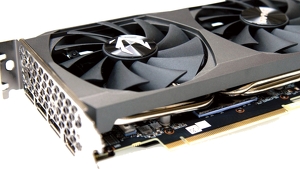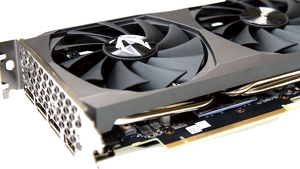
The RTX 3060 has big shoes to fill. The last-gen RTX 2060 brought Nvidia's crown jewel features like real-time ray tracing and DLSS to a broadly affordable price point, while the value of the Pascal-era GTX 1060 means that it's still the most popular graphics card in the world, according to the Steam Hardware Survey. What's more, the RTX 3060 also has to differentiate itself from the recently-released (and well received) 3060 Ti, which is itself a cut-down RTX 3070 available at a much lower price point. It's a recipe for disappointment for the RTX 3060, but thankfully Nvidia's new card has some unique advantages that keep it in contention – including some surprising specs, a raft of custom designs and a nerf to cryptomining that may aid retail availability.
For starters, let's talk price: the 3060 is a $330/£300/€330 graphics card, which makes it $70/£70 cheaper than the RTX 3060 Ti. Ideally, that would mean that we'd see the RTX 3060 deliver a little more than 80 per cent of the performance of the RTX 3060 Ti, as we're paying around 82 per cent of the price. Nvidia promises the performance of an RTX 2070 at the cost of an RTX 2060, and that definitely sounds like a good deal – especially when you remember that the GTX 1060 debuted at $300, and this card should offer around double the performance for only a few currency units more, inflation notwithstanding. (Of course, the graphics card market remains absolutely risible at the moment, so whether we actually see any RTX 3060 cards at their recommended retail price for longer than a split-second remains to be seen – but we're doing our best to round up where to buy the RTX 3060 here.)
But for that money, we do get something quite special: 12GB of GDDR6 memory, compared to just 8GB on the RTX 3060 Ti and RTX 3070 – and come to think of it, that's even more than the 10GB of GDDR6X memory on the RTX 3080! So what's going on here? Well, the answer is pretty nerdy: it has to do with the 192-bit memory bus on the 3060. The simple explanation is that this bus is split into 32-bit chunks, each of which can access one 1GB or 2GB module of GDDR6. If you divide 192 by 36, you get six – so you can either have 6GB of RAM or 12GB of RAM, depending on whether 1GB or 2GB memory modules are used on the card. Nvidia opted for 2GB modules for 12GB in total, so here we are! 12GB still sounds like a lot for a card primarily tasked with 1080p gaming, but with competing AMD Radeon RX 6700 cards rumoured to sport the same amount, it's clearly a fight that Nvidia didn't want to lose.
